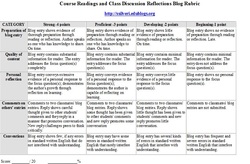"Literature’s Emotional Lessons: |
Blog Post Rubric
Archives
February 2023
Categories
All
|
"Literature’s Emotional Lessons: |
Blog Post Rubric
Archives
February 2023
Categories
All
|